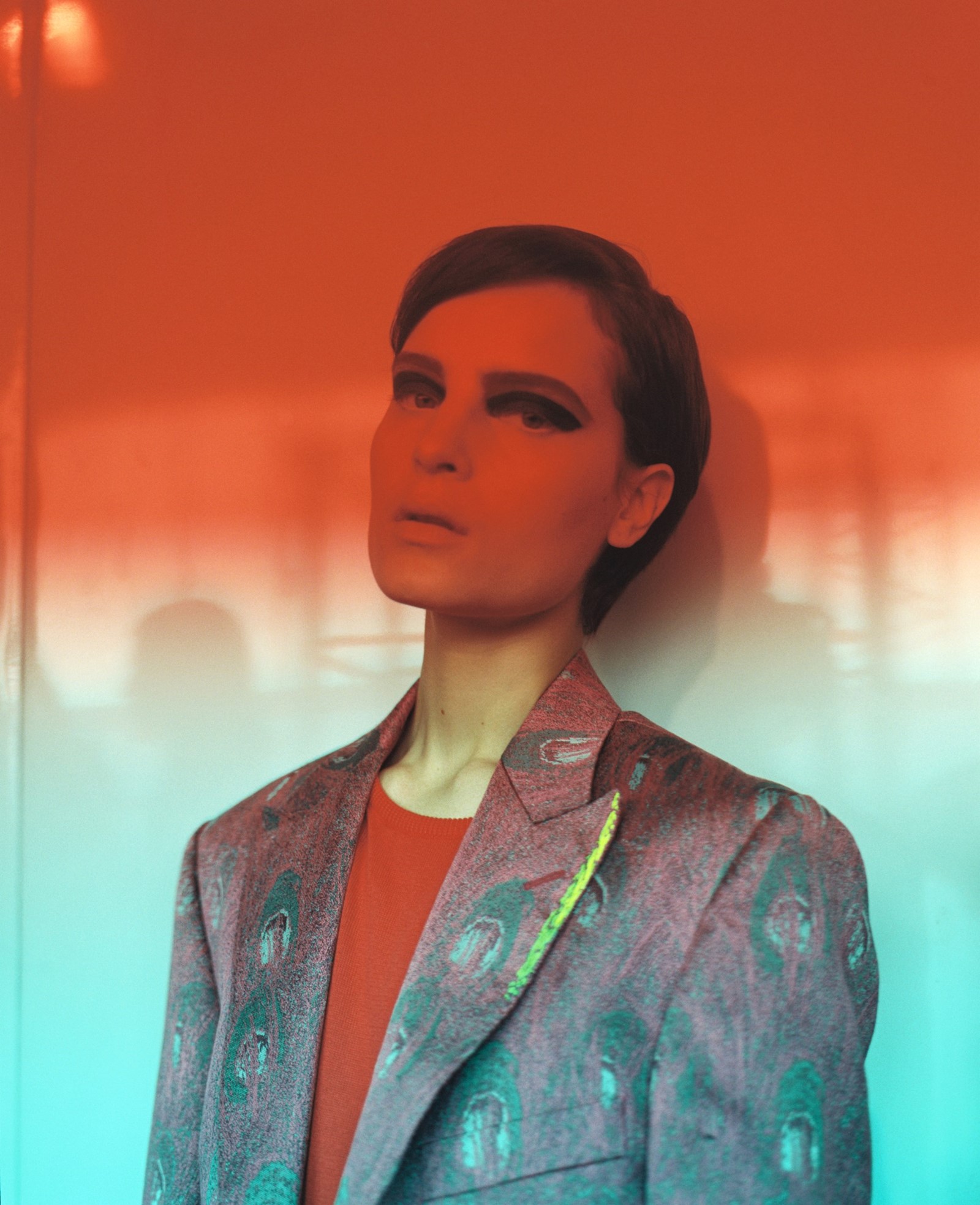The Casely-Hayfords are pillars of London’s menswear scene so it’s little wonder that, over the past few years, countless women have come knocking on their door demanding similarly refined tailoring. For S/S17, their demands have come to fruition: at their recent London Collections: Men show, the father-and-son duo introduced a new focus on womenswear, which was interwoven throughout the collection in the form of double-breasted tailoring and spliced knitwear. This marked the beginning of a completely made-to-order service for women from the brand, one that aims to offer a bespoke service akin to the tailoring firms of Savile Row (a large part of which still operates as a strictly gentlemen-only affair). “Our customer wants something completely individual and unique to them,” says Charlie Casely-Hayford, the chattier half of the pair. “That’s really where we see things moving towards in this oversaturated marketplace. None of the womenswear will be wholesaled – we’ll be working with the women to create the fabrics and develop the garments for them.”
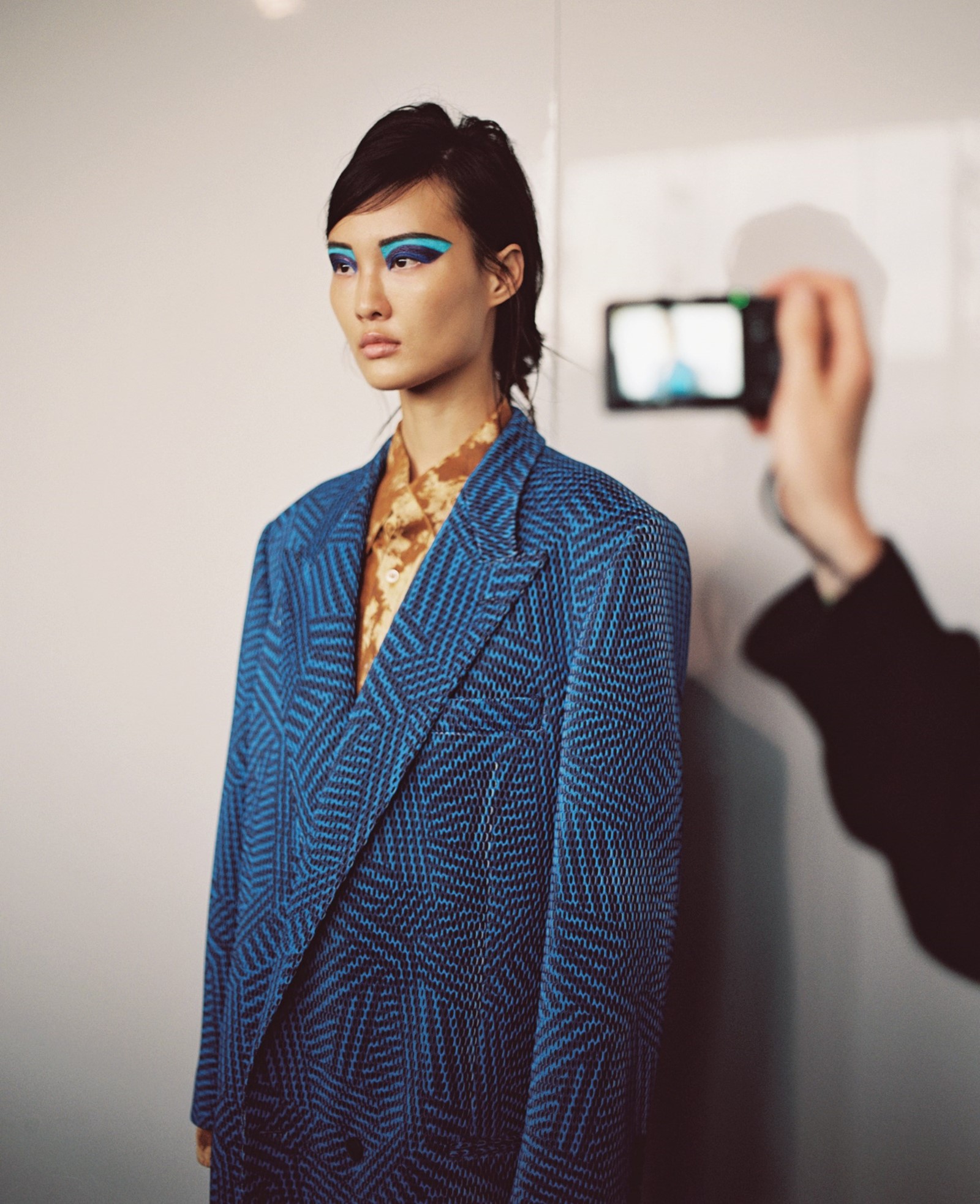
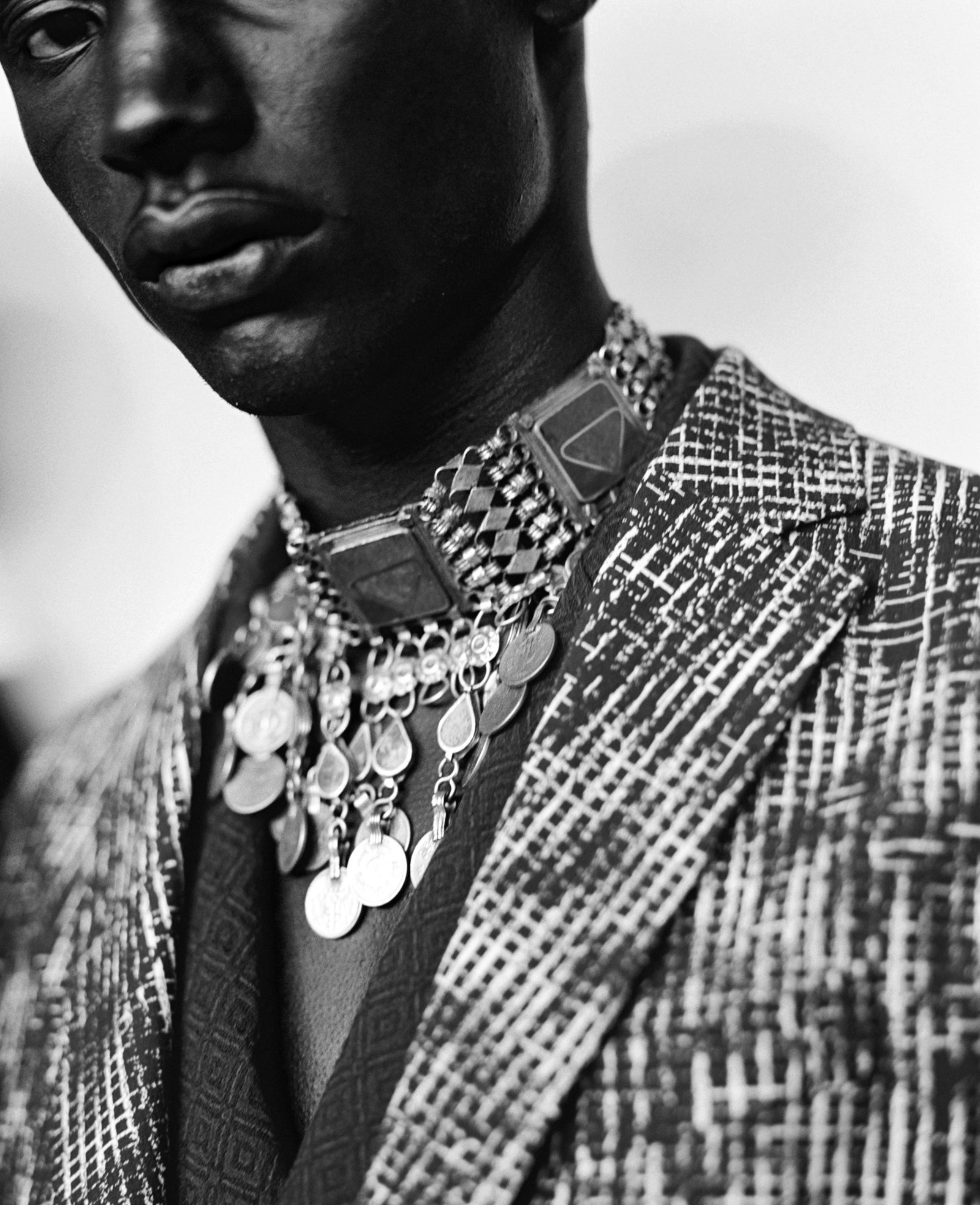
The collection, titled Apex Twin, was an exploration of the generation gap between Charlie (son) and Joe (father), the latter of whom has been in the fashion business since the mid-80s. It contrasted elements of 70s rock'n'roll peacockery, jingling with Palestinian-inspired jewellery and warm Moroccan trims, with the clean lines and nuanced codes of grime-flavoured sportswear. “It’s about the differences in growing up with and without the internet,” explains Charlie, who stands over six and a half feet tall, with a multi-quadrant Basquiat afro adding a few inches. “It was interesting for us to see how those two worlds have developed and the idea that a pre-internet movement can only grow organically but something like grime is a uniquely London movement that is now global because of the internet.”
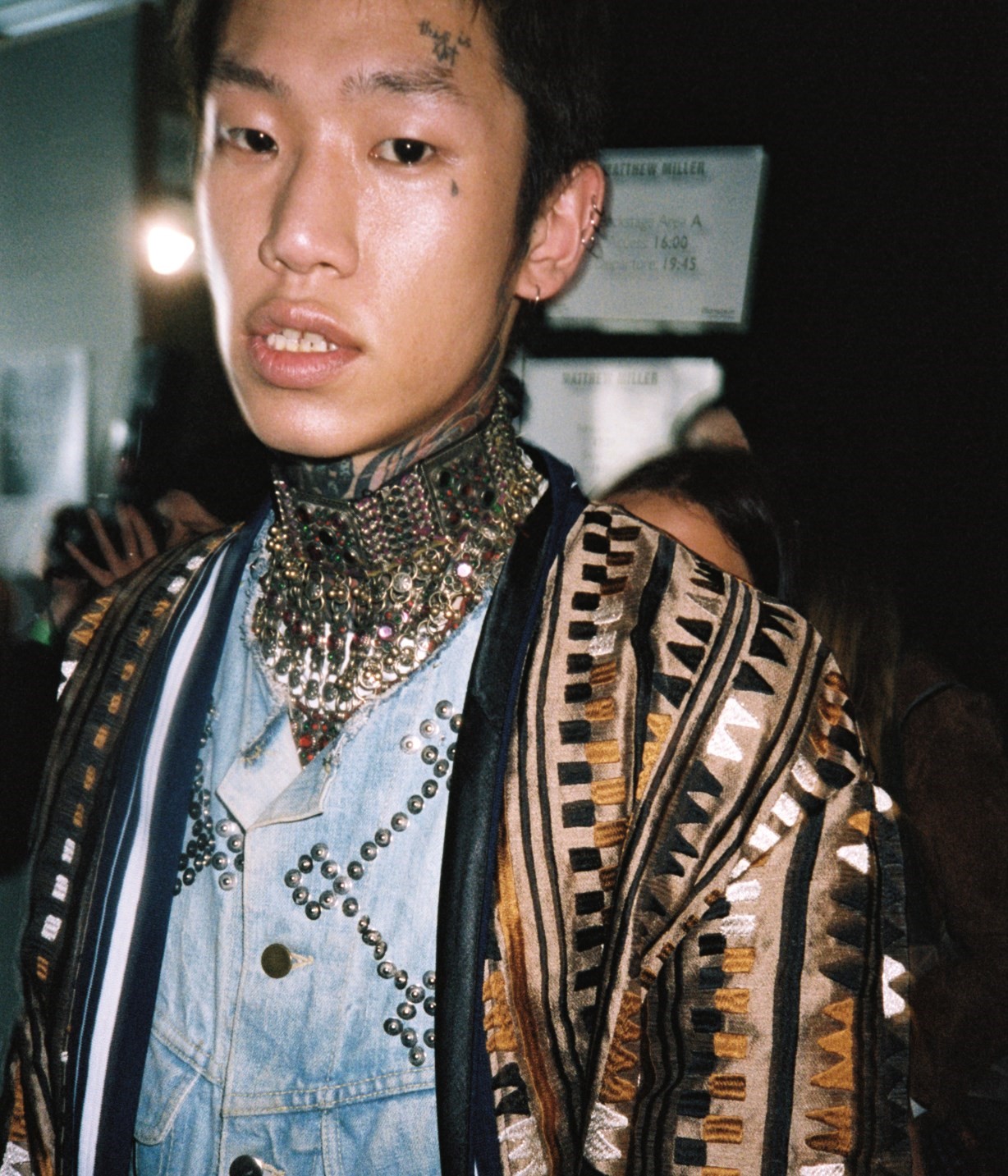
Despite the duality of the themes, the common thread was a laboured attention to quality. All of the jacquards were woven in collaboration with Vanners, the Sussex-based silk weaving mill that has been around for almost three centuries. The pair explained that they had taken some of their favourite images and fuzzed them to create the warped fabrics that were then cut into oversized tailoring. Supermalt, a popular malt drink loved by generations of Afro-Caribbeans, and Bumpstopper, a cream that black men use to avoid ingrown hair, provided unlikely colour palettes of tangerine and claret. The fit was decidedly boxy to avoid the contrived feminine details that women’s tailored often bears – elements like nipped-in waists and tapered legs. “That’s very much a part of our thing,” says Charlie. “The ‘boyfriend fit’ is controlling and constrictive, and often our female clients come to us for more of an authentic menswear look. The type of women that we hope to appeal to negate that whole thing and are about freedom to wear what they want.”

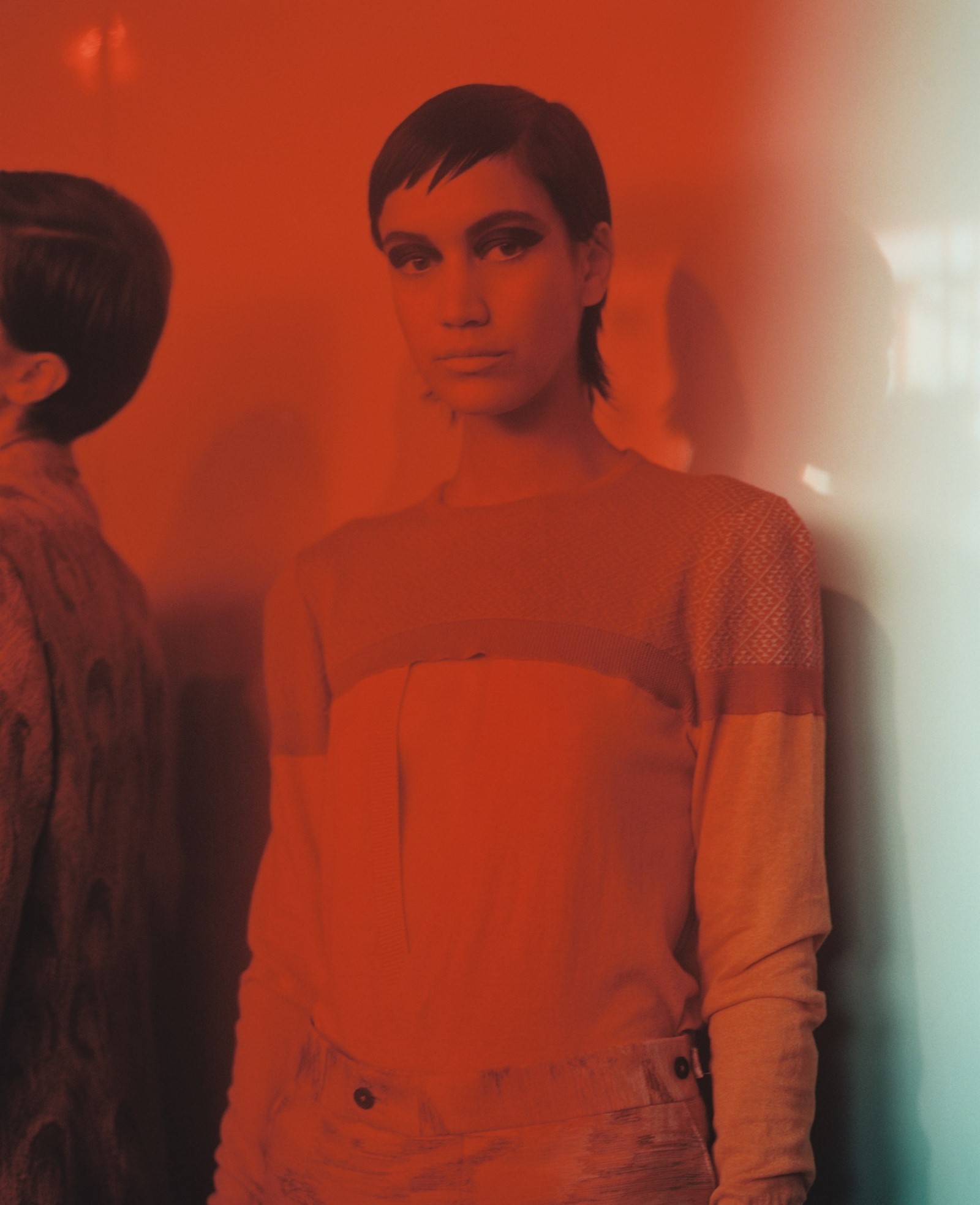
Also present were also sinuous silk knits, one of which cut away at the sternum and another forming part of a hybrid dress that veered between cardigan and smock – which is hardly surprising considering Joe Casely-Hayford knitwear was always a winner in the 80s and 90s, courtesy of its postmodern collage sensibility. “We delved into my archive and it was absolutely nostalgic,” says Joe, a man of few words. “It’s always a really interesting conversation because I’m seeing something for the first time that my dad has seen several times over,” adds Charlie. “Quite often it’s about me convincing my dad why it’s relevant now and him convincing me that it doesn’t have relevance. The funny thing is that I often come at it as an older person and my dad comes at it from a more youthful perspective.” What they both have in common, however, is the ability to make menswear that women really want.

